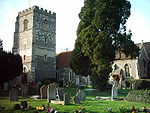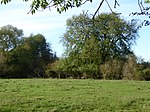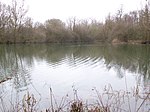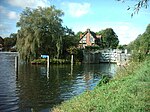The Fat Duck

The Fat Duck is a fine dining restaurant in Bray, Berkshire, England, owned by the chef Heston Blumenthal. Housed in a 16th-century building, the Fat Duck opened on 16 August 1995. Although it originally served food similar to a French bistro, it soon acquired a reputation for precision and invention, and has been at the forefront of many modern culinary developments, such as food pairing, flavour encapsulation and multi-sensory cooking.The number of staff in the kitchen increased from four when the Fat Duck first opened to 42, resulting in a ratio of one kitchen staff member per customer. The Fat Duck gained its first Michelin star in 1999, its second in 2002 and its third in 2004, making it one of eight restaurants in the United Kingdom to earn three Michelin stars. It lost its three stars in 2016, as it was under renovation, preventing it from being open for assessment. It regained all three stars in the following year.The Fat Duck is known for its fourteen-course tasting menu featuring dishes such as nitro-scrambled egg and bacon ice cream, an Alice in Wonderland-inspired mock turtle soup involving a bouillon packet made up to look like a fob watch dissolved in tea, and a dish called Sound of the Sea which includes an audio element. It has an associated laboratory where Blumenthal and his team develop new dish concepts. In 2009, the Fat Duck suffered from the largest norovirus outbreak ever documented at a restaurant, with more than 400 diners falling ill.
Excerpt from the Wikipedia article The Fat Duck (License: CC BY-SA 3.0, Authors, Images).The Fat Duck
Bray Road,
Geographical coordinates (GPS) Address Nearby Places Show on map
Geographical coordinates (GPS)
| Latitude | Longitude |
|---|---|
| N 51.507949 ° | E -0.701774 ° |
Address
Bray Road
Bray Road
SL6 2AA , Bray Wick
England, United Kingdom
Open on Google Maps









